The KVVAK trip to China - Travel Diary by Alice Rijkels
Today we will fly to Quanzhou. Once we will have arrived at the airport there, Ting-tiang and Wai Lan will join us and from then on our group will be complete. I am so looking forward to seeing them again!
Before leaving the Victory hotel I take another dive in the swimming pool at the rooftop of the hotel. Truke and I are the only ones in the water. The water splashes, we make jokes.
Like yesterday the smog is choking. The office and apartment buildings around the hotel still look grey. No parks or gardens; no trees that could provide some fresh oxygen. The people living here are used to closing their windows to keep the smog out; and their apartments have internal air pollution cleaner systems, if they can afford it.
After another tasty breakfast with the group I go upstairs again to pick up my bags. Christine collects tips money from us for the guide; thanks for being so social Christine!
Wednesday October 19, 2016
Quanzhou - Dehua
Today we will fly to Quanzhou. Once we will have arrived at the airport there, Ting-tiang and Wai Lan will join us and from then on our group will be complete. I am so looking forward to seeing them again!
Before leaving the Victory hotel I take another dive in the swimming pool at the rooftop of the hotel. Truke and I are the only ones in the water. The water splashes, we make jokes.
Like yesterday the smog is choking. The office and apartment buildings around the hotel still look grey. No parks or gardens; no trees that could provide some fresh oxygen. The people living here are used to closing their windows to keep the smog out; and their apartments have internal air pollution cleaner systems, if they can afford it.
After another tasty breakfast with the group I go upstairs again to pick up my bags. Christine collects tips money from us for the guide; thanks for being so social Christine!

The flight from Guangzhou to Quanzhou is delayed, so we hang around a bit and there is time for a picture.
Once the plane is off, I get into a conversation with my neighbour, a very friendly Chinese man. He has an English name, Michael, plus a Chinese name. He tells me, he is about to become a psychiatrist. Today, he is flying to Quanzhou and from there to another place to lead family sessions, give trainings and a lecture about how to improve relationships Chinese parents have with their children. Apparently, parents in China put a lot of pressure on their kids to excel at school.
Consequently, the suicide rate for children is very high, which is a major issue for the families and the society. The one child policy made matters worse. For the child, the pressure and fear of failure is
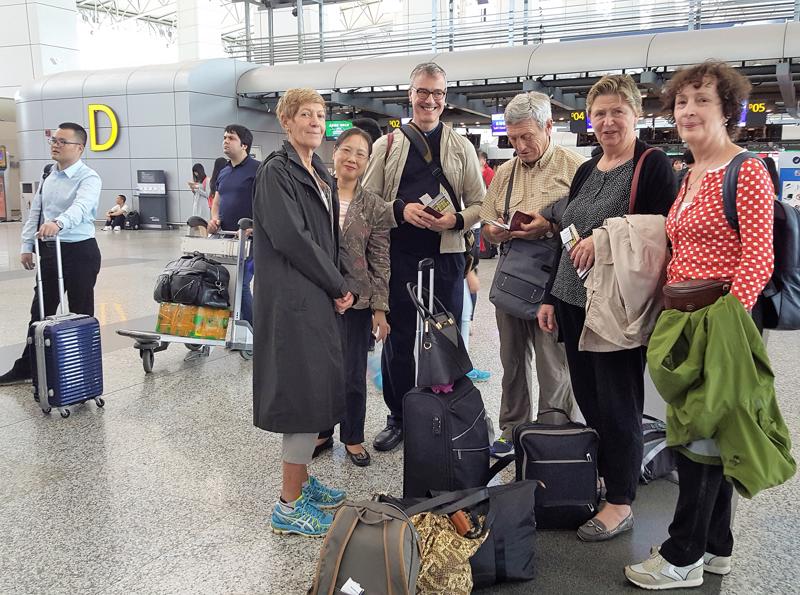
many times too high. Michael tells me, that it nearly choked his own life; but he got over his own problems and then he decided to study medicine and psychiatry, in order to heal problematic families.
He hopes to finish his doctoral thesis soon. I am deeply impressed. Michael is so happy to practice his English with me. I tell him about Holland; but I do not think he knows where that strange little country is located exactly.
At the airport of Quanzhou in Fujian, we happily run into the the welcoming arms of Ting-tiang, Wai Lan - and meet with our new guide, Sou.
The bus is about the same type as in Guangzhou, but the diesel tank sits as a big isle in-between the seats. We climb over it, and are ready to enter Quanzhou, also known as Zaitun, the city of light in the province of Fujian.
At around 16:00 we arrive at Xiangfeng lane. I feel good here, in this city which faces Taiwan. It has been multicultural for many centuries. Christians, Jews, Muslims and Chinese live in peace together here.
The heat in the city is stifling again, but the group is doing well. We are looking forward to explore this city. Carl wants to see the Pagodas and the Mosque; Christine the pottery found in a shipwreck.
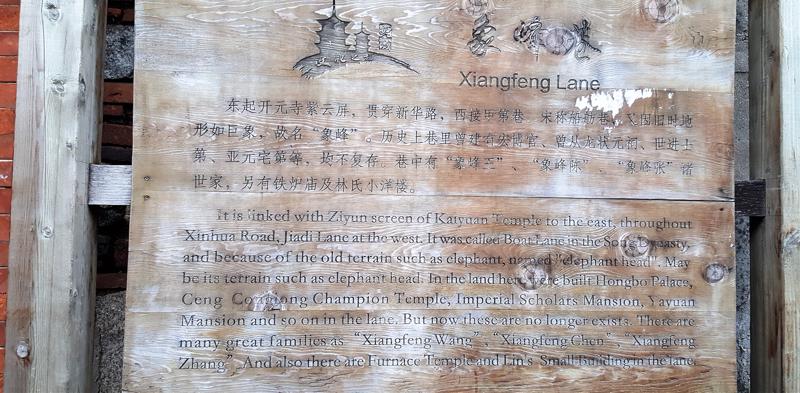
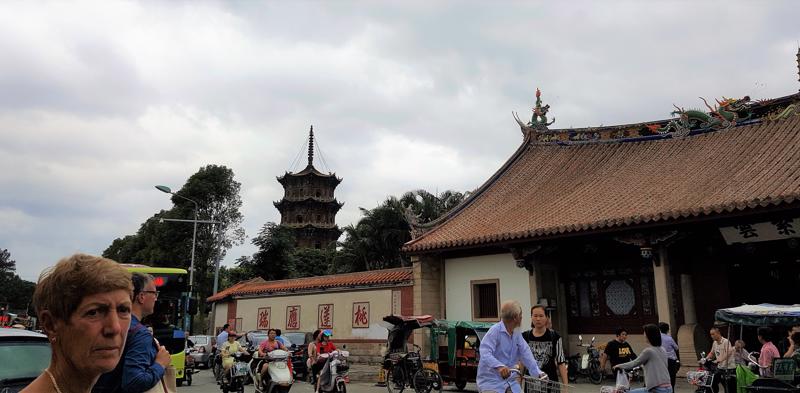
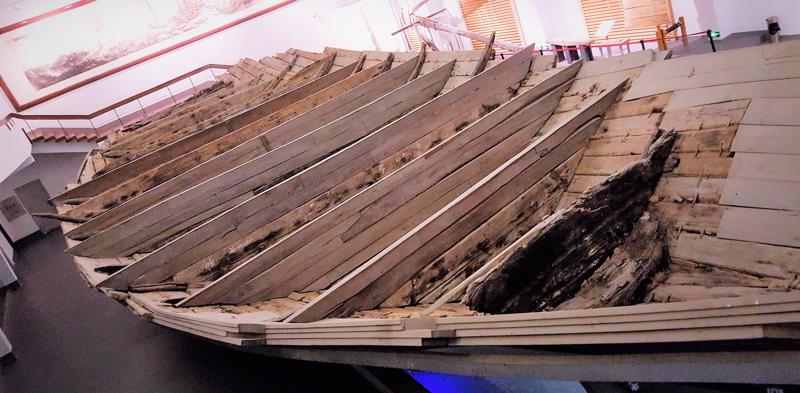

Wai Lan tells us about her favourite celadon, Bente admits she wants to admire all art, Ting-tiang quips and shares information on our whereabouts, Marion talks about the Ming, Truke is interested in the city’s history, Sam explains about the porcelain trade. After we step out of the bus, Sam walks in front of the group with Marion; they are full of energy.
We enter the Kaiyuan temple pavilion for visiting a shipwreck with Song pottery. The Kaiyuan Temple, which is one of China’s largest and most important Buddhist temples. Inside the gardens of this temple one finds the Maritime Museum. A near complete ship wreck of a Song ship - dated 1277 - is shown. During this Southern Song era the Chinese ship building and navigation was the most sophisticated in the world. This ship wreck was excavated around 1973 - it is amazing to find a ship here in real size. There are objects exhibited which were found near and in the ship on the sea bottom: a lid from a Longquan pot with a beautiful green colour and fat buttery glaze, some pots, sherds and plates. Waterpots and martavans were excavated from the shipwreck site. and wooden plates with the names of several boatmen, written in Chinese characters.
Very emotional to know that these men went down with this ship.

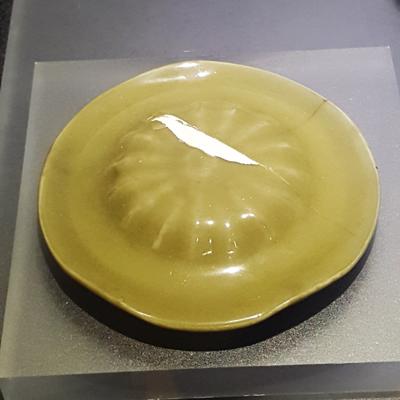
There was in the Song and Yuan a ceremony always held for the merchant ships: the “ceremony of praying to the Sea God for a lucky wind and offering sacrifice to the Sea” was performed by the Head (or one of his subordinates) of the Quanzhou prefecture at the Zhaohui temple in the Jiuri Mountain. Prayers asking for a safe journey were also carved into the mountain stone.
In a maquette, the ship is shown in its original shape. We look into the inside, it is a nice ship but it looks rather vulnerable to us. These sailors and merchants must have been brave people, to enter the seas on this collection of wooden planks!
Via the garden we arrive near one of the two five storey Pagodas, near the Kaiyuan temple. This one is part of a set of twin pagodas. The East & West Pagoda (or Zhenguo and Renshou Pagoda) are standing apart on each side of the Kaiyuan temple at a distance of 200 meters, they are said to be the best preserved stone pagodas in China. With a height over 40 meters, they are in case the tallest twin stone pagodas in China.
The Renshou Pagoda was originally a wooden structure constructed
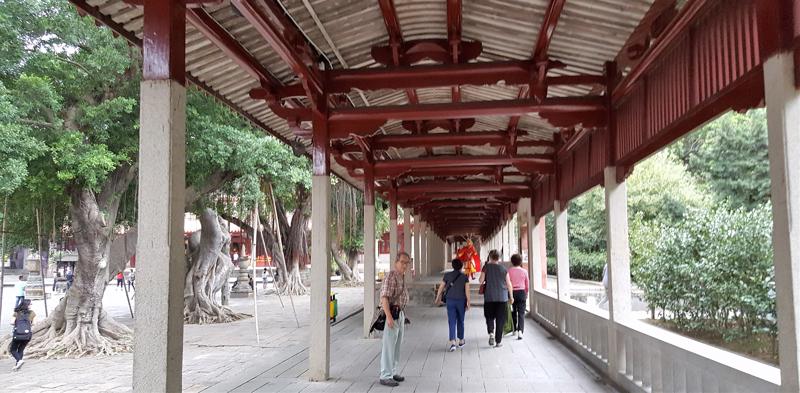
in 916 during the Five Dynasties. After it burnt down twice during the Song Dynasty, the pagoda was rebuilt, first of brick, then of stone. Its appearance and structure are basically the same as those of the Zhenguo Pagoda (but, being 44.6 meters high, it is 4.18 meters smaller and was built ten years earlier).
The history of the construction of Zhenguo Pagoda is described in Quan Zhou Fu zhi (the Records of the Quanzhou Prefecture) and Shuang Ta Ji Lue (A Brief History of the Twin Pagoda), written by Jiang Dejing. Jiang said in his book: "The Zhenguo Pagoda used to be a nine-storey wooden structure erected during the Xiantong period (860-873) of the Tang Dynasty and destroyed in 1155. Monk Liaoxing had it rebuilt in 1186, only to see it demolished in 1227. In 1238 Monk Bengong built it again, of stone...". A study of the various part of the present pagoda found nothing contradictory to the description.
The Zhenguo Pagoda is 48.24 meters high with a diameter of 18.5 meters; each side is 7.8 meters wide. The Sumeru pedestal is fairly low and carved with a tier of lotus flowers and another tier of grasses. Sculptured on each of its eight corners is a celestial guard shouldering the pedestal. The girdle of the pedestal is inscribed with
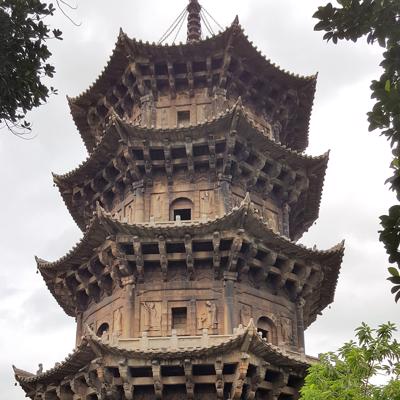

thirty-nine pictures, including tales about the Buddha and images of lions, dragons and other animals. The pedestal is enclosed by stone railings and five steps are cut on each of its four sides.
Each (of the, nowadays:) five storeys of the pagoda is formed by outer walls, verandas, internal winding corridors and a central pillar. There are doors on four sides and niches for Buddhist statues on the others. Carved on both sides of the doors are images of heavenly kings and celestial guards. On both sides of the niches are vivid images of Manjusri, Samantabhadra and other bodhisattvas, gods and Buddhist disciples. Some of the gods have three heads and six arms, carrying the sun and moon on their hand palms, while others carry calabashes or sceptres. The corners of each storey are cylindrical, something rarely seen in ancient architecture. And each storey has a veranda so that visitors can enjoy the view. Most ancient pagodas in northern China have purely ornamental railings.
The internal structure of these two pagodas is different from other
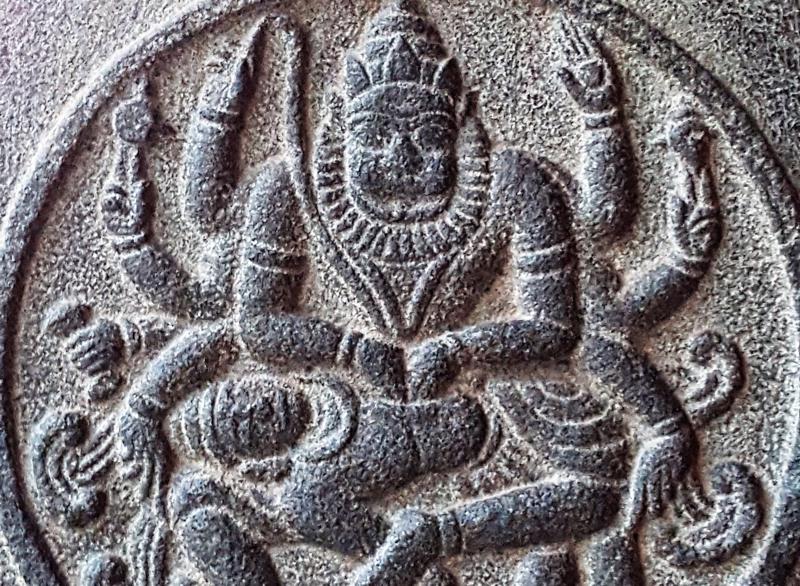
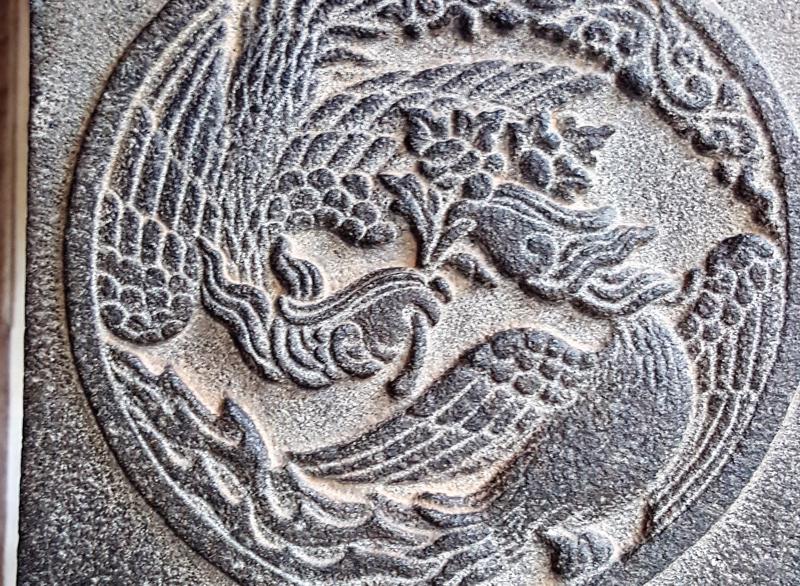
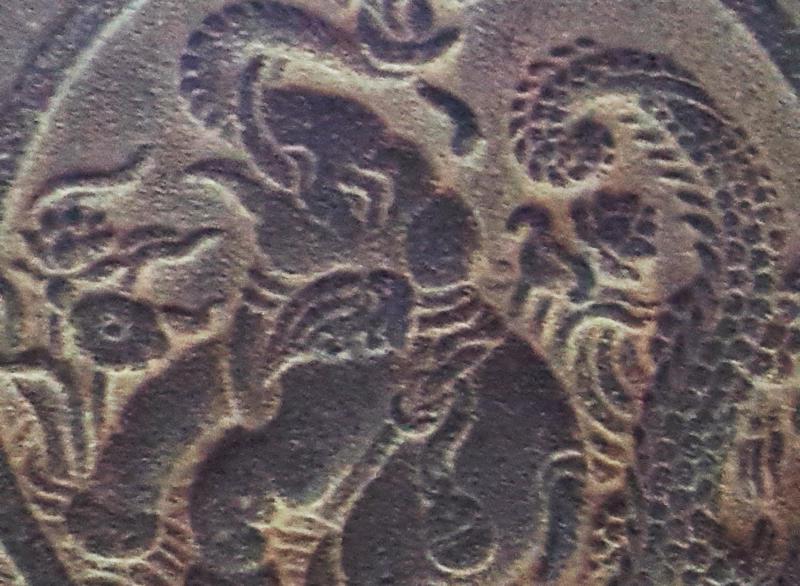

pagodas: the winding staircases were not built along the walls or the central pillars, but, in faithful imitation of wooden pagodas, installed through a square hole on one side of the central pillar, which is solid and contains no compartments. There are niches on the sides facing the doors for statues of Buddha. The central pillar is connected to the outside walls by the flooring of the internal corridors. The flooring is formed by two layers of slabstone with a facing of stone strips and supported by stone beams.
The iron steeples of the Twin Pagodas are typical in style for multistoreyed pagodas, lofty and graceful. They are connected firmly by iron chains to the roof corners of the pagodas.
It is 15 minutes before closing time when we move into the direction of the Kaiyuan temple. This Buddhist temple contains pillar fragments and tiles from an earlier temple built (but later destroyed) on the same location. Inside the temple we “meet” with the Vairocana Buddha, the main Buddha according the Huayen-Buddhism. People are kneeling for him. Others are bowing and bring flowers, showing obvious gratitude and respect. The atmosphere is spiritual. The Buddha sits in front of a red background which is dark vermillion; the
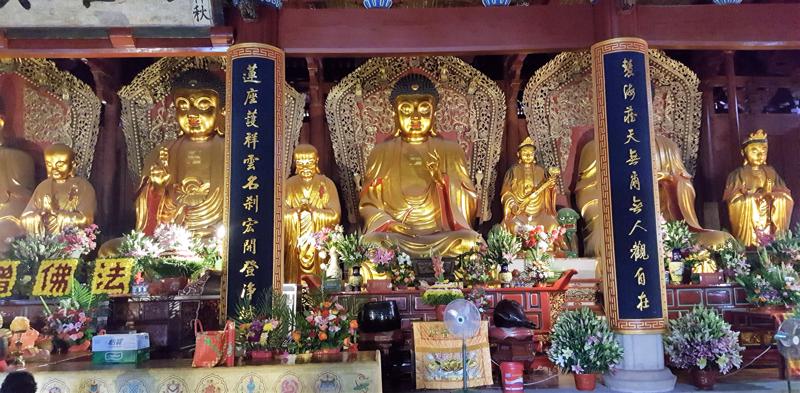
gold is very golden. This statue of Vairocana is breathtaking. I kneel too and pray the world will be ok, please?
Kaiyuan temple is a Buddhist temple, the largest in Fujian province with an area of 78,000 square metres (840,000 sq ft). Although it is known as a "Hindu-Buddhist temple", on account of added Tamil-Hindu influences, the main statue in the most important hall is that of Vairocana Buddha, the main Buddha according to Huayen-buddhism. What is now called the Mahavira Hall (Mahavira = the Great and Strong) is in fact the Vairocana Hall.
It was originally built in 685 or 686 during the Tang Dynasty. Behind its main hall "Mahavira Hall”, there are some columns with fragments from a Shiva temple built in 1283 by the Tamil community in Quanzhou dedicated to Hindu God Shiva. The carvings are dispersed across five primary sites in Quanzhou and the neighboring areas. They were made in the South Indian style, and share close similarities with 13th-century temples constructed in the Chola Nadu region in Tamil Nadu. Nearly all of the carvings were carved with greenish-gray granite, which was widely available in the nearby hills and used in the region's local architecture. In 1983, the Kaiyuan
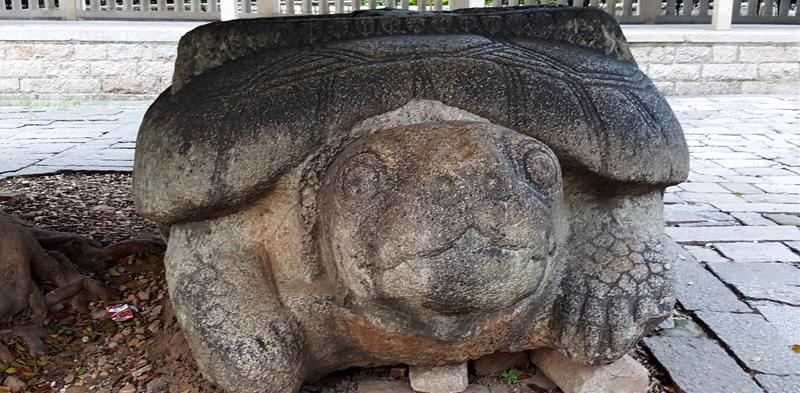
Temple was designated as a national temple.
Leaving via the back side of the temple we pass a bixi turtle in stone, carved out of granite, it used to carry a pillar. It’s form is solid, round and stable.
The bus driver starts the bus and brings us to the oldest Mosque in China, the Qingjing Mosque, which is rated as one of the top ten Muslim holy sites of the world.
This mosque is very old and there is not much left of it. Being in this old Mosque, this holy place, with its long history, is impressive. We walk into the old prayer area. The pillars are still there; some stones indicate where the walls used to be.
This Mosque was constructed in 1009. It was at its prime during the
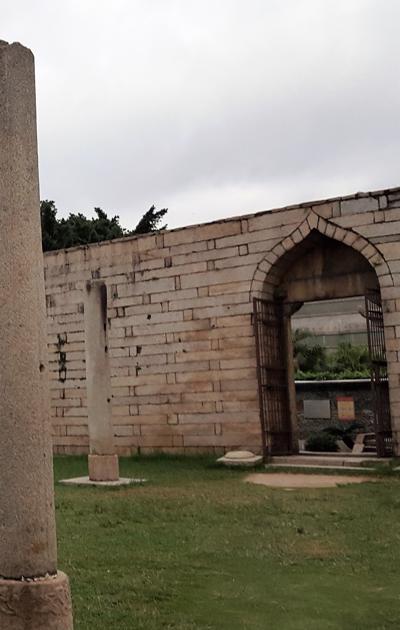
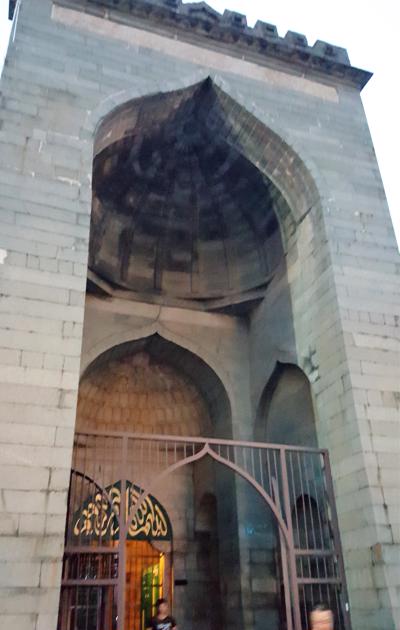
Song and the Yuan dynasties (960 -1279 AD; and 1279 – 1368 AD, respectively). In the late Yuan the Islamic faith was cruelly suppressed: this brought the Mosque in decline.
Today, freedom of belief is celebrated in Quanzhou; muslims are well integrated here. They were active in the seaborne trade even during the Song and the Yuan; and during the Mongol Yuan rule, the number of Arab and Persian Muslims residing in the Chinese port city of Quanzhou increased again.
It is 17:47 now, I see, through an open door, a well-lit, bright space where two men bend their knees; soon, they are in deep prayer.
Outside, it is already dark now and the air is very hot and humid. Wai Lan waves to us : she knows where we will have dinner tonight and, unfortunately, it is time to leave this mystical Mosque.
The group walks along a busy city road - where the shops have lovely names such as “Purer Puff” -, while the traffic noise sings in our ears.

The grey blast of dirty particles whirlwinds around us; what a bustling place! I’d love to bring back the horses and carriages here, or, alternatively, already introduce electric cars, made in Shenzhen.
After a while Wai Lan directs us to enter a restaurant with a lovely cool big entrance hall; it looks kind of chique. A private room is appointed to us, with a big round table.
Dinner is great. And there is lots of talk on porcelain tonight at the table. Ting-tiang keeps filling our plates. Truke discusses Joris Ivens with Carl. The last bowl is served, full of food which is typical for the region: eel.
We are picked up by the bus driver - and the guide - at the exit of the restaurant. He still has to drive us about 100 miles through the dark
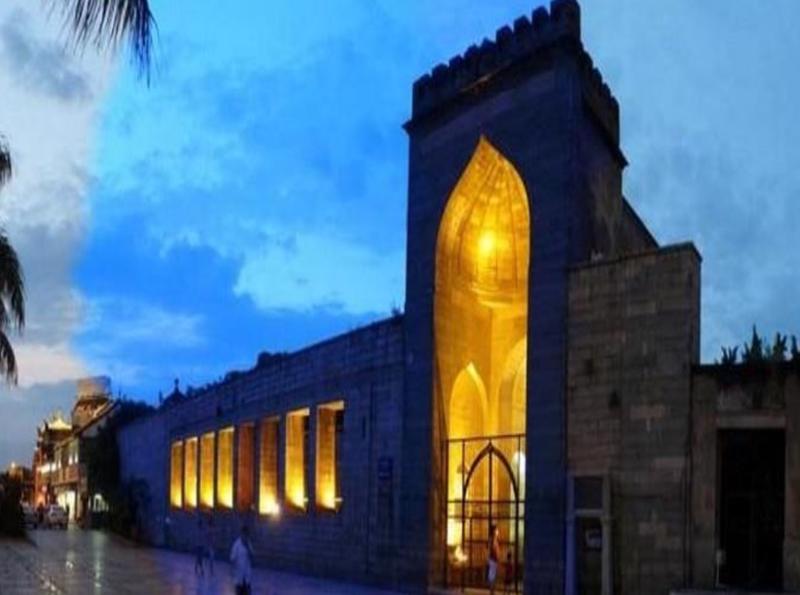
night, along mountainous roads, back to Dehua.
In the bus, the television is turned on. A cute baby-faced lady presents a quiz; our answers are blowing in the wind.
The district of Dehua is situated on the eastern slopes of the Daiyun Mountains of southern Fujian, some 50 miles inland at an altitude of fifteen hundred feet. The name Dehua, which means "Virtuous Cultivation," was bestowed by Taizu of Min, a monarch who established Fujian as an independent kingdom. His dynasty did not reign for long, but it gained everlasting fame in ballads and local lore. During the next few centuries, the poor, hilly, and, in those times, still densely forested region of Dehua became the hinterland of the rich port of Quanzhou on the Fujian coast. Dehua, using very special techniques, produced devotional art during the Ming and the Qing that was unlike any other devotional art coming from other places. Its very special character is confirmed in the writings of at least one Confucian polemicist, a certain Wen Zhenheng (1585 - 1645 A.D.). Born in present-day Suzhou, Wen was a renowned and influential scholar who committed suicide out of loyalty to the Ming dynasty when the latter was toppled by the Manchu invaders.
Late in the night, we arrive at Dehua’s China Pearl Hotel. We enter a big reception hall, with a “Dehua porcelain” shop, which
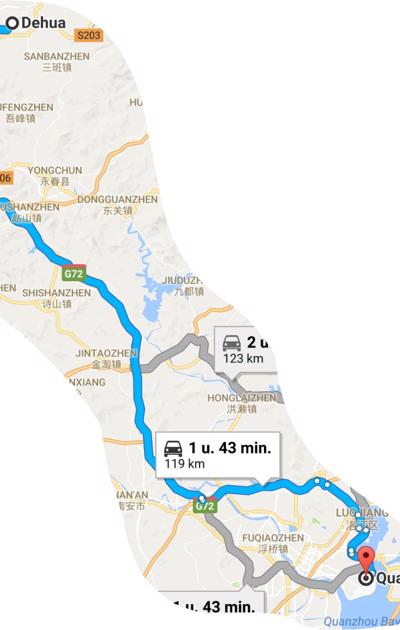
already gives us a taste of the type of porcelains around here. The computer in my room is funny to check out: all software interfaces are in Chinese. I try for a while to get commands executed; but without translation buttons, that is a difficult task. I phone Pieter. Then, it is time to get some sleep… Tomorrow will be a big day: we are going to a very interesting museum!
1.
Introduction
2.
Saturday October 15, 2016
3.
Sunday October 16, 2016
4.
Monday October 17, 2016
5.
Tuesday October 18, 2016
6.
Wednesday October 19, 2016
7.
Thursday October 20, 2016
8.
Friday October 21, 2016
9.
Saturday October 22, 2016
10.
Sunday October 23, 2016
11.
Monday October 24, 2016
12.
Tuesday October 25, 2016
13.
Wednesday October 26, 2016
14.
Thursday October 27, 2016
15.
Friday October 28, 2016
16.
Saturday October 29, 2016
17.
Sunday October 30, 2016